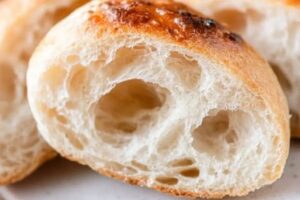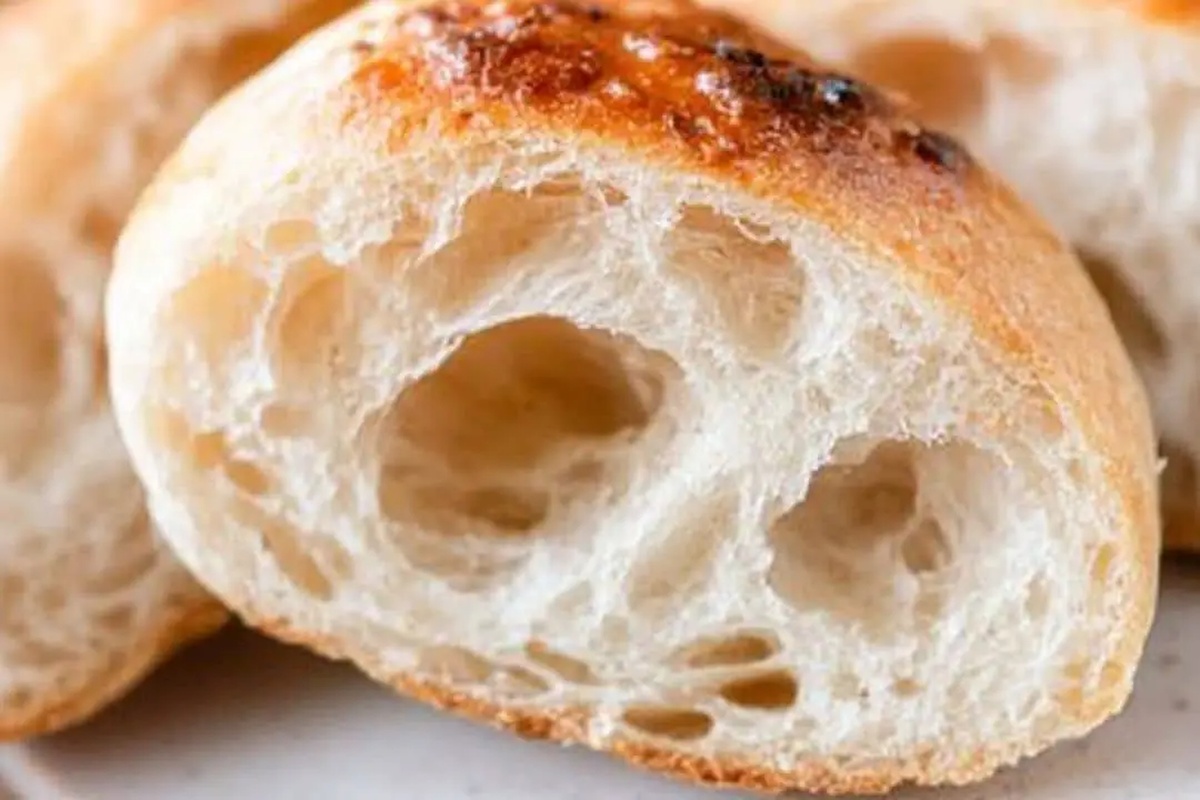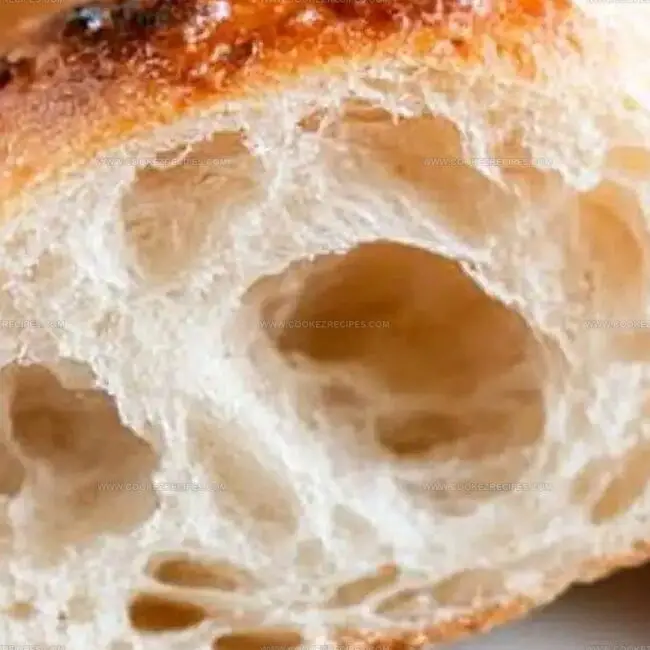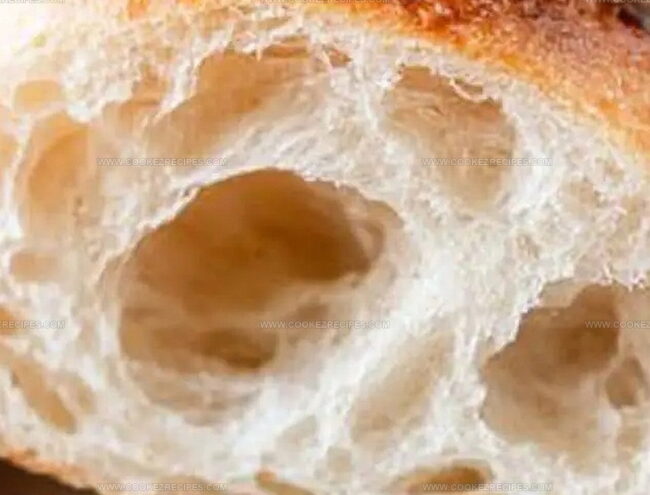Fluffy Small Batch Ciabatta Rolls Recipe For Bread Lovers
Crafting homemade small batch ciabatta rolls can transport you to an Italian bakery with minimal effort.
Rustic and pillowy, these delightful bread morsels come together surprisingly quickly.
Soft interior bubbles peek through a crisp golden crust that whispers authentic Mediterranean charm.
Flour, water, and a touch of patience become your kitchen companions in this simple adventure.
Nothing compares to pulling warm rolls straight from your oven, filling the space with irresistible aromas.
Professional bakers might guard their secrets, but you can master these rolls with confidence.
Slice, toast, or serve these rolls alongside soups and salads for an instant gourmet experience that will make everyone swoon.
Why Small Batch Ciabatta Rolls Are Perfect Anytime
Small Batch Ciabatta Rolls Essentials
Dry Ingredients:Wet Ingredients:Optional Ingredients:Small Batch Ciabatta Rolls Dough Steps
Step 1: Activate Yeast
Create a foamy base by mixing warm water with yeast.
Let the mixture sit for about 5-10 minutes until it becomes bubbly and fragrant.
This process awakens the yeast and prepares it for bread making.
Step 2: Mix Dry Ingredients
Combine in a large mixing bowl:Whisk these ingredients together to ensure even distribution and prevent salt from directly touching the yeast.
Step 3: Create Dough Base
Pour the activated yeast mixture into the dry ingredients.
Add:Mix with a wooden spoon or spatula until ingredients start to form a shaggy, loose dough.
The mixture will look uneven and slightly sticky.
Step 4: Knead the Dough
Transfer the dough to a lightly floured surface.
Use your hands to fold and press the dough, stretching and turning it repeatedly.
Continue kneading for 7-10 minutes until the dough becomes smoother and more elastic.
The texture should feel soft and slightly tacky but not overly wet.
Step 5: First Rise
Place the kneaded dough in a lightly oiled bowl.
Cover with a clean kitchen towel or plastic wrap.
Let the dough rest in a warm, draft-free area for 1-2 hours until it doubles in size.
Step 6: Shape Ciabatta Rolls
Gently deflate the risen dough.
Divide into equal portions on a floured surface.
Carefully shape each portion into oval or rectangular rolls, handling the dough delicately to preserve air pockets.
Step 7: Second Rise
Place shaped rolls on a baking sheet lined with parchment paper.
Cover and let rise for another 30-45 minutes until puffy and soft.
Step 8: Prepare for Baking
Preheat the oven to 425°F.
Lightly dust the rolls with flour and create gentle indentations with your fingertips.
Step 9: Bake Ciabatta Rolls
Slide the baking sheet into the preheated oven.
Bake for 15-20 minutes until rolls turn golden brown and sound hollow when tapped on the bottom.
Step 10: Cool and Serve
Remove rolls from the oven and transfer to a wire rack.
Allow to cool completely before slicing to preserve their delicate internal structure.
Ciabatta Rolls Made Easy in Small Batches
Ciabatta Rolls That Stay Bakery-Fresh
Simple Bites for Ciabatta Rolls
Ciabatta Rolls – Small Changes to Try
FAQs
Ciabatta rolls have a unique chewy, airy texture with large, irregular holes inside due to high hydration dough and minimal kneading, which creates a rustic, Italian-style bread.
No, these rolls are surprisingly simple to make. The process involves basic ingredients and straightforward mixing techniques, making it achievable for home bakers with some basic bread-making skills.
Honey adds a subtle sweetness and helps activate the yeast, while olive oil contributes to the soft texture and rich flavor of the ciabatta rolls, creating a more complex taste profile.
While bread flour is recommended for its higher protein content that helps develop gluten, you can use all-purpose flour. The rolls might be slightly less chewy, but they’ll still turn out delicious.
Print
Easy Small Batch Ciabatta Rolls Recipe
- Total Time: 35 minutes
- Yield: 4 1x
Description
Homemade “easy small batch ciabatta rolls” bring Italian bakery charm straight to kitchen counters with minimal effort. Pillowy interiors and crisp crusts invite warm butter and creative sandwich adventures you won’t want to miss.
Ingredients
Main Ingredients:
- 2 cups all-purpose flour
- 1 cup warm water (110°F / 43°C)
- 1 tablespoon olive oil
- 1 tablespoon honey (or sugar)
Yeast and Seasoning:
- 1 teaspoon instant yeast
- 1 teaspoon salt
Dusting and Finishing:
- Cornmeal or flour (for dusting)
- 1 tablespoon olive oil (for brushing)
Instructions
- Whisk flour, instant yeast, and salt together in a spacious mixing vessel, creating a uniform dry foundation for the ciabatta rolls.
- Create a separate liquid mixture by blending warm water, olive oil, and honey, ensuring the sweet component dissolves completely.
- Gradually integrate the liquid mixture into the dry ingredients, stirring with a utensil until a cohesive, albeit sticky, dough formation begins.
- Transfer the nascent dough onto a lightly dusted work surface, employing gentle kneading techniques to develop gluten structure. Utilize moistened hands or additional flour to manage the dough’s adhesive nature.
- Assess the dough’s hydration level, incrementally introducing additional warm water if the mixture appears excessively dense or unyielding.
- Continue manipulating the dough until it achieves a smooth, elastic consistency with subtle shine, indicating proper development of protein networks.
- Allow the dough to rest momentarily, permitting internal moisture distribution and relaxation of gluten strands, which enhances the final texture of the ciabatta rolls.
- Shape the dough into individual rolls, maintaining a rustic, slightly irregular form characteristic of traditional ciabatta bread.
- Position the formed rolls on a prepared baking surface, ensuring adequate spacing for potential expansion during proofing and baking.
Notes
- Experiment with different flour types like whole wheat or spelt for unique flavor profiles and added nutrition.
- Handle the sticky dough with wet hands or a bench scraper to prevent excessive flour absorption and maintain the signature open crumb texture.
- Let the dough rest longer at room temperature for deeper fermentation and more complex flavor development, which enhances the traditional ciabatta taste.
- Sprinkle semolina or cornmeal on the baking sheet for a crispy bottom crust and extra authentic Italian bread character.
- Prep Time: 15 minutes
- Cook Time: 20 minutes
- Category: Snacks, Dinner
- Method: Baking
- Cuisine: Italian
Nutrition
- Serving Size: 4
- Calories: 200
- Sugar: 2 g
- Sodium: 300 mg
- Fat: 5 g
- Saturated Fat: 0.7 g
- Unsaturated Fat: 4.3 g
- Trans Fat: 0 g
- Carbohydrates: 36 g
- Fiber: 1 g
- Protein: 6 g
- Cholesterol: 0 mg




Katherine Pierce
Recipe Curator & Food Educator
Expertise
Education
Boston University Metropolitan College
Certificate Program in the Culinary Arts
Focus: French and international cuisine techniques, Hands-on culinary training with industry professionals, Food industry insights and operations
Katherine grew up believing every dish has a story. She studied the art of food at Boston University and explored the history behind it. She loves pulling easy recipes from every corner of the world and putting them at your fingertips.
When Katherine’s not writing or testing new flavors, she’s teaching cooking classes, baking colorful mooncakes, or dreaming up new ways to mix old favorites with new twists.